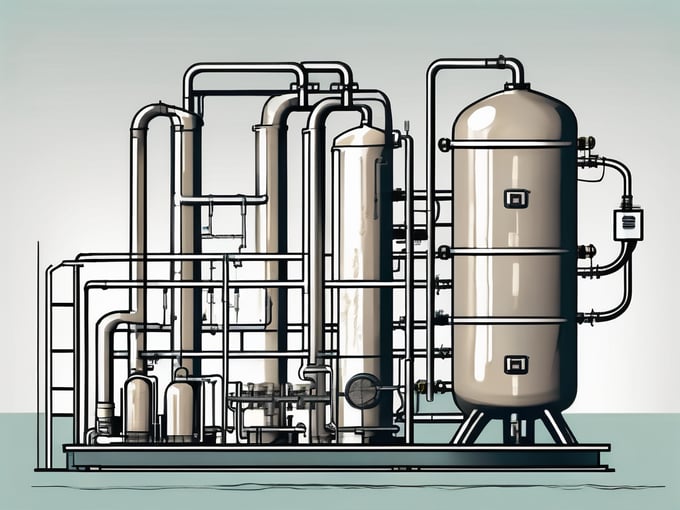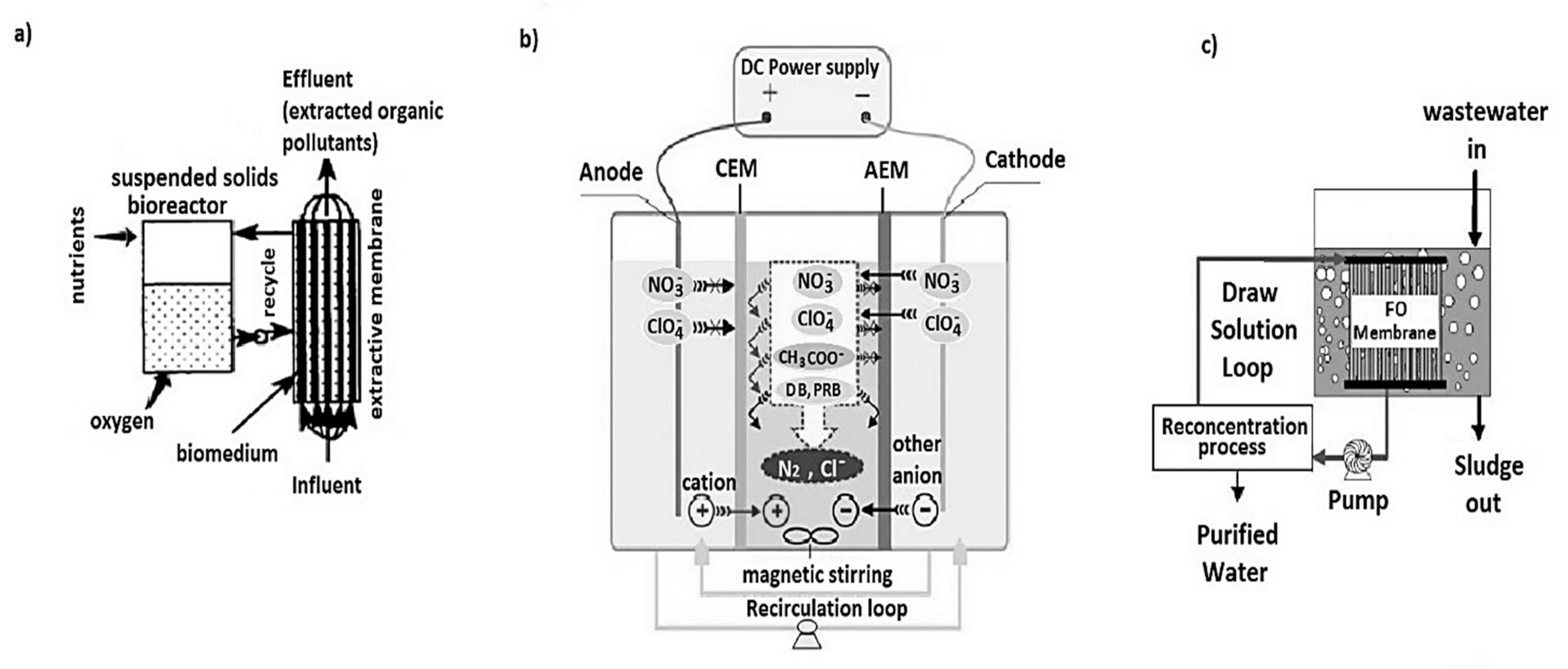The Role of Membrane Bioreactor in Achieving Higher Effluent Quality Standards
The Role of Membrane Bioreactor in Achieving Higher Effluent Quality Standards
Blog Article
Recognizing Membrane Layer Bioreactors: The Future of Wastewater Treatment
Membrane layer bioreactors (MBRs) represent a notable technology in the area of wastewater therapy, incorporating organic procedures with advanced membrane layer filtering to enhance effluent quality. As worldwide water scarcity and rigid regulatory structures become significantly pushing concerns, MBR innovation offers an effective action through its ability to reduce impact and maximize resource recuperation. The adoption of MBRs is not without its challenges, which warrant cautious factor to consider. What are the essential elements affecting their execution and long-lasting practicality in various contexts? The answers might reshape our technique to wastewater management.
What Are Membrane Bioreactors?

The core elements of MBR systems include a bioreactor where microbial task takes place and a membrane unit that filterings system the mixed alcohol. This dual capability allows the simultaneous deterioration of natural matter and solid-liquid separation in a single step. MBRs can run in both immersed and external arrangements, with immersed systems being extra typical due to their portable design and functional performance.
The adoption of MBR modern technology has actually gained traction in different applications, varying from metropolitan wastewater therapy to commercial effluent management. MBRs are especially advantageous in situations where room is restricted or rigorous effluent quality criteria should be met. By keeping a high focus of microbes within the bioreactor, MBRs enhance the destruction of organic toxins, thereby producing higher treatment performances compared to typical methods.
Secret Benefits of MBR Innovation
The integration of organic treatment with membrane layer filtration in MBR systems offers many advantages that establish it aside from traditional wastewater therapy approaches. Among the main advantages is the enhanced effluent top quality. MBRs successfully eliminate suspended microorganisms and solids, attaining greater levels of purification that satisfy rigid discharge standards and help with water reuse applications.

One more substantial advantage is the minimized sludge production. MBR systems generate less excess sludge, bring about lower disposal costs and a decline in ecological impact. The shut nature of the membrane layer system decreases the danger of odor exhausts and boosts total process control.
Lastly, MBRs are functional and adaptable, making them ideal for various wastewater kinds, consisting of commercial and community sources. The ability to incorporate with innovative therapy technologies additionally enhances their efficiency, making MBRs a promising remedy for the future of wastewater administration.
Obstacles and Limitations of MBRs
While MBR innovation supplies many advantages, it also deals with a number of difficulties and restrictions that can affect its prevalent adoption. One substantial difficulty is the high capital and functional expenses related to MBR systems. The preliminary investment for membrane products and the essential infrastructure can be significant, making it less available for smaller sectors or districts.
Additionally, membrane fouling continues to be an important problem that can decrease system efficiency and increase upkeep demands. Fouling occurs when solids, natural matter, or microbes accumulate on the membrane surface, leading to reduced leaks in the structure and needing regular cleansing or replacement.
One more restriction involves the complexity of the modern technology. MBR systems need experienced Read More Here personnel for operation and maintenance, which can be a barrier in regions with limited technical experience. The disposal of invested membrane layers provides ecological issues, as the materials are commonly not biodegradable and can add to lose administration obstacles.
Lastly, while MBRs can efficiently treat a wide range of wastewater, they may not appropriate for all applications, especially those with high focus of fats, oils, and greases, requiring further study and advancement to attend to these constraints.
Applications of Membrane Layer Bioreactors
In numerous markets, membrane bioreactors (MBRs) have become a versatile solution for wastewater therapy (Membrane Bioreactor). Their applications span municipal, commercial, and agricultural setups, showcasing their flexibility and efficiency in varied environments. In community wastewater therapy plants, MBRs significantly enhance effluent quality, allowing for water reuse and lowering the environmental influence of discharged wastewater
Industrially, MBRs are used in food and beverage handling, textile manufacturing, and pharmaceutical production, where they successfully deal with high-strength waste streams. Their ability why not try these out to take care of differing and rising and fall loads impurity focus makes them especially valuable in these industries. Furthermore, MBRs help with the removal of pathogens, suspended solids, and organic issue, contributing to compliance with rigid discharge regulations.
In agriculture, MBRs are progressively used for dealing with agricultural drainage and animals wastewater, making it possible for the recovery of nutrients for fertilizer manufacturing. They also help in the treatment of greywater for irrigation, promoting sustainable water monitoring methods.
The versatility of MBRs is further confirmed by their assimilation with various other modern look at this site technologies, such as anaerobic food digestion and progressed oxidation procedures, improving overall performance and resource healing in wastewater therapy systems.
The Future of Wastewater Therapy
Advancements in modern technology and an expanding emphasis on sustainability are shaping the future of wastewater therapy. Membrane bioreactors (MBRs) exhibit this shift by incorporating biological treatment processes with membrane layer filtering, causing premium effluent suitable for reuse. The fad in the direction of round economic situations is triggering facilities to adopt MBRs for their ability to recuperate sources, such as water and nutrients, from wastewater.
Technologies in membrane materials and setup are enhancing the efficiency and longevity of MBR systems, lowering functional prices and power consumption. Smart innovation integration, including real-time surveillance and automated control systems, is more maximizing performance and enabling predictive maintenance, hence decreasing downtime.
In addition, regulatory stress and societal assumptions are pressing districts and markets to take on even more lasting methods. Membrane Bioreactor. The shift towards decentralized wastewater treatment solutions is gaining traction, permitting local treatment that reduces transport expenses and energy usage
Conclusion
Membrane bioreactors (MBRs) stand for a transformative strategy to wastewater treatment, incorporating biological processes with advanced membrane layer innovation. The advantages of MBRs, consisting of boosted effluent quality, lowered spatial requirements, and reduced sludge production, place them as a feasible solution amidst growing urbanization and more stringent environmental policies. Regardless of existing difficulties, the ongoing development in membrane layer products and operational methods guarantees to bolster the efficacy and fostering of MBRs, guaranteeing their essential duty in the future of sustainable wastewater management.
Membrane layer bioreactors (MBRs) stand for a significant innovation in the area of wastewater therapy, incorporating organic procedures with advanced membrane layer purification to boost effluent high quality.Membrane layer bioreactors (MBRs) incorporate biological therapy procedures with membrane filtration to effectively deal with wastewater.The assimilation of biological therapy with membrane layer purification in MBR systems offers various advantages that establish it apart from standard wastewater therapy methods. Membrane layer bioreactors (MBRs) exhibit this shift by incorporating biological treatment procedures with membrane layer purification, resulting in premium effluent ideal for reuse.Membrane bioreactors (MBRs) represent a transformative approach to wastewater therapy, incorporating biological processes with sophisticated membrane modern technology.
Report this page